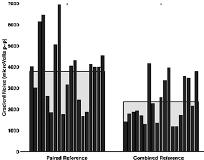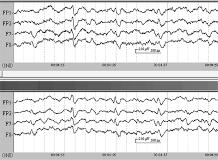A COMBINED EEG (ELECTROENCEPHALOGRAPHY) REFERENCE METHOD FOR SIMULTANEOUS EEG-FMRI (FUNCTIONAL MAGNETIC RESONANCE IMAGING) RECORDING OF EPILEPSY
Abstract number :
2.332
Submission category :
Year :
2004
Submission ID :
4781
Source :
www.aesnet.org
Presentation date :
12/2/2004 12:00:00 AM
Published date :
Dec 1, 2004, 06:00 AM
Authors :
1Michiro Negishi, 2,3Hal Blumenfeld, 2,4Edward J. Novotny, 5Dennis D. Spencer, and 1,5,6Robert T. Constable
Simultaneous electroencephalogram (EEG) and functional magnetic resonance imaging (fMRI) recording is a promising tool for non-invasive epileptiform localization (Magn Reson Med 2000; 44: 791-798). Selection of EEG referencing scheme greatly affects the level of gradient noise in such recordings. We developed a new referencing method that uses weighted sum of multiple reference leads to reduce the gradient noise. We made an electrode cap each of whose 19 measurement leads was twisted with a linked ear reference. Because all reference leads branches out from the same source, any linear combination of reference leads is a correct reference as long as the sum of the weights is one. We used a constrained optimization to compute optimal combined reference to minimize the gradient noise. Here we show an example of the application of this method to a data obtained from an epileptic patient who participated in the study after written consent. The patient lay still during four six-minutes runs of simultaneous EEG-fMRI acquisition. Fig. 1 shows the average peak-to-peak voltage after paired (twisted pair) reference (left) and combined reference (right). Average voltages of all electrodes were 3.8 and 2.6 millivolts, respectively. Fig. 2 shows EEG data showing interictal spikes (left: paired reference, right: combined reference) after PCA-based gradient noise removal (Clin Neurophysiol, in press). FMRI parametric map using detected spikes as regressors showed significant activations at the left inferior frontal gyrus and the left parietal lobe. Use of combined reference significantly reduced the gradient noise before gradient artifact reduction. Spike waveforms after gradient noise removal were visibly cleaner when combined reference was used. [figure1][figure2] (Supported by NIH R01-NS40497, NIH R01-NS38467.)

